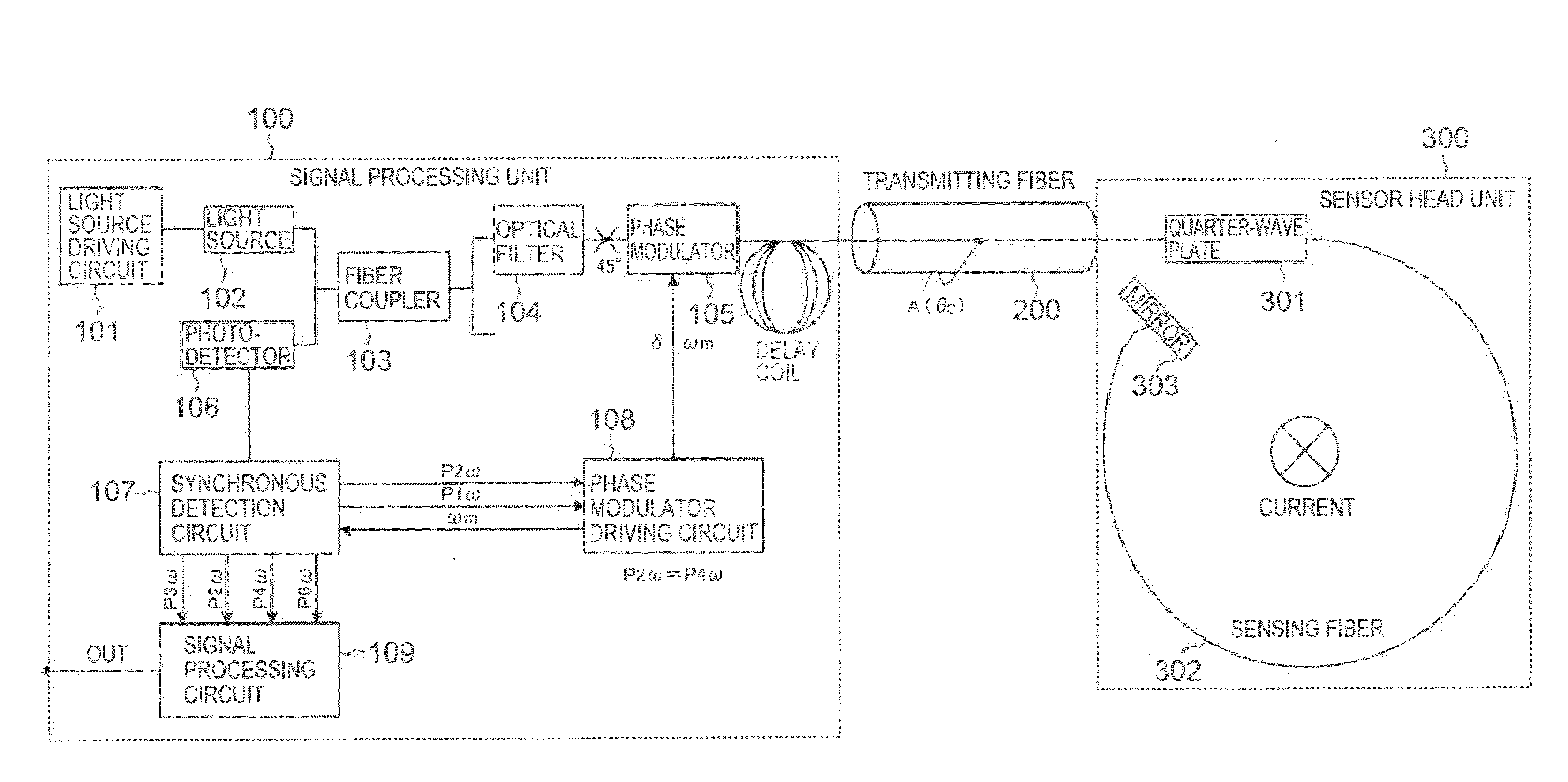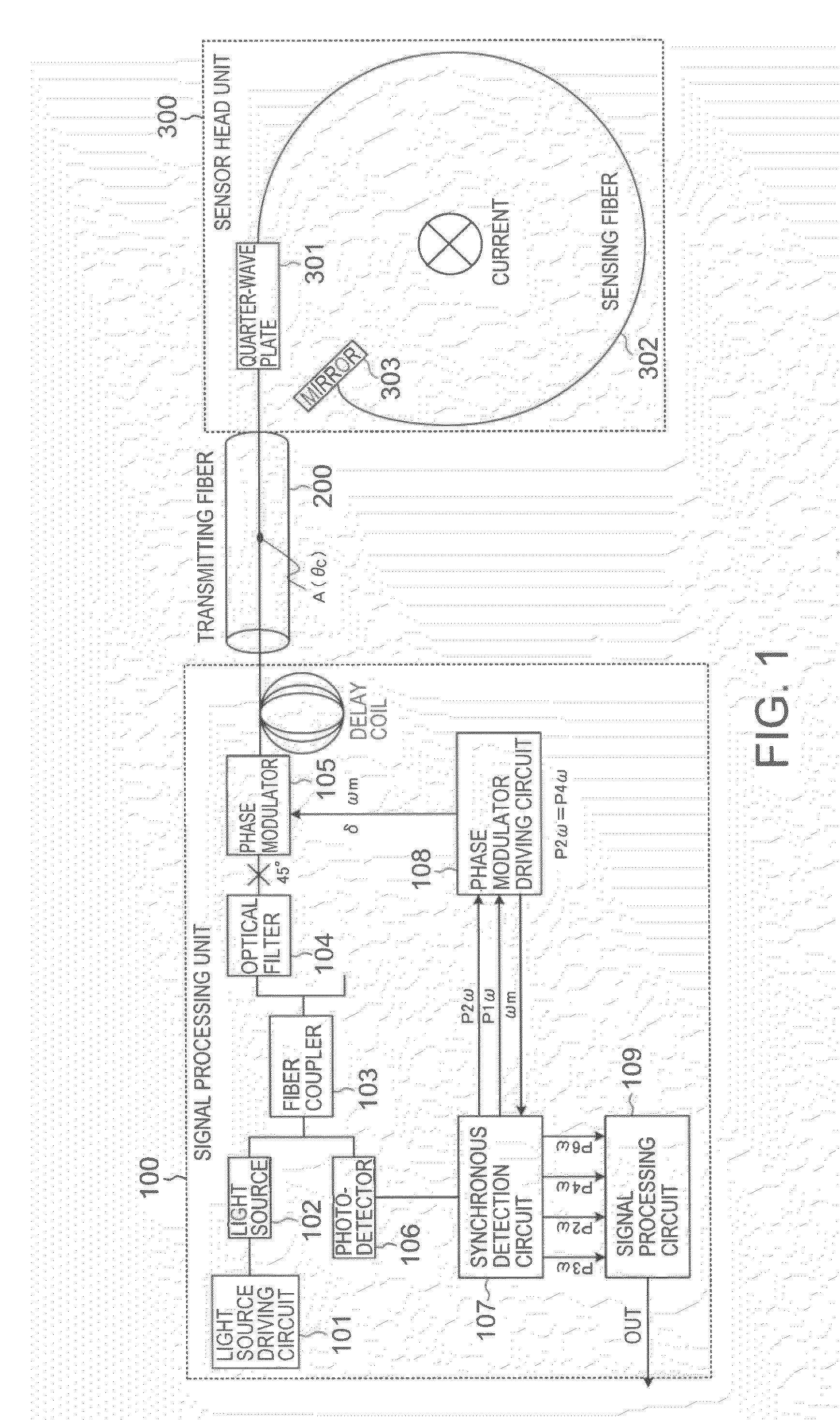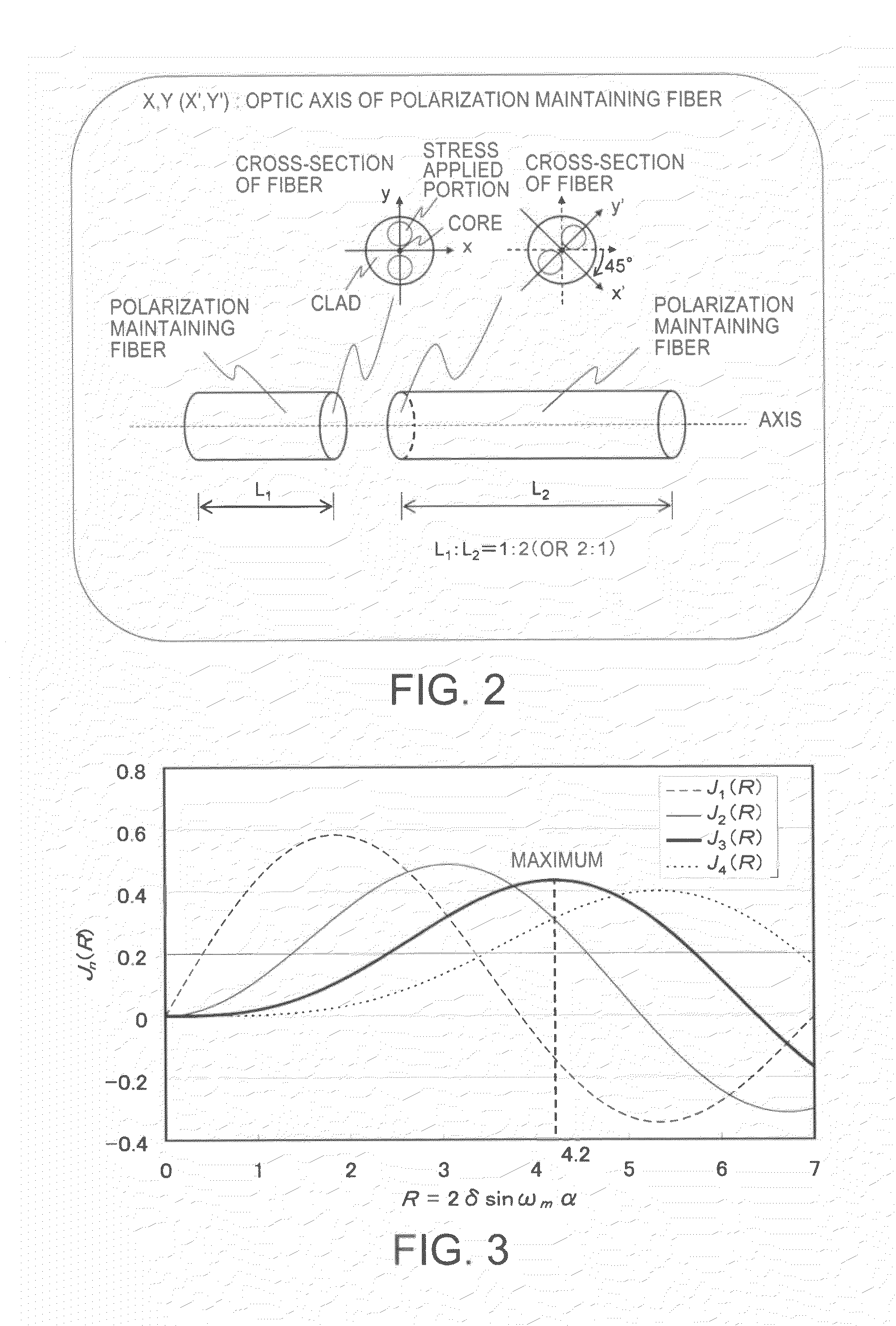Sagnac interferometer-type fiber-optic current sensor
- Summary
- Abstract
- Description
- Claims
- Application Information
AI Technical Summary
Problems solved by technology
Method used
Image
Examples
first embodiment
1. First Embodiment
[0045]Next, the Sagnac interferometer-type fiber-optic current sensor according to the first embodiment of the present invention is explained below with reference to FIGS. 1 to 12. Hereinafter, the basic structure of the optical current sensor according to the first embodiment and fundamental operation shall be explained, and the Jones matrix shall be used to explain the behavior of the light.
[0046]First, the basic structure of the Sagnac interferometer-type fiber-optic current sensor according to the first embodiment is explained with reference to FIG. 1. FIG. 1 is a figure showing the basic structure of the Sagnac interferometer-type fiber-optic current sensor (Sagnac interferometer-type optical CT).
[0047]As shown in FIG. 1, the Sagnac interferometer-type fiber-optic current sensor includes a signal processing unit 100 which is composed of a light source driving circuit 101 described later, a light source 102, a fiber coupler 103, an optical filter 104, a phase ...
second embodiment
2. Second Embodiment
[0174]Next, the Sagnac interferometer-type fiber-optic current sensor according to the second embodiment is explained with reference to FIGS. 13 to 18. In the second embodiment, since the structures other than the phase modulator driving circuit 108 is the same as those of the first embodiment, the explanation is omitted and the same mark or symbol is denoted.
[0175]The feature of the second embodiment is to set P1ω to “0” at all times by controlling the phase modulation depth δ using the phase modulator driving circuit 108 as shown in FIG. 18.
[0176]Next, the control of the phase modulation depth δ to set P1ω to “0” by the phase modulator driving circuit 108 is explained hereinafter. In the explanation about the behavior of the light, the Jones matrix is used like the first embodiment.
[0177]First, in the above equation 31 showing the first-order harmonics, it is necessary to set J1(R) to “0” in order to set P1ω to “0” regardless of the axial misalignment angle θc ...
third embodiment
3. Third Embodiment
[0216]Next, the structure of the Sagnac interferometer-type fiber-optic current sensor according to the third embodiment is explained below. In the third embodiment, since the components other than the phase modulator driving circuit 108 is the same as those of the first embodiment, the explanation about the components shall be omitted and the same marks or symbols is denoted.
[0217]The feature of the third embodiment is that R=2δ sin ωmα is set to be larger than 0 and smaller than 7 in the phase modulator driving circuit 108 so that P1ω does not become “0” except R=2δ sin ωmα≈3.83 as explained later.
[0218]Next, the control of the phase modulator by the phase modulator driving circuit 108 according to the third embodiment is explained below including the prior problems.
[0219]In the second embodiment, the phase modulator driving circuit 108 controls the phase modulator so as to be P1ω=0. However, when the current I to be measured is “0”, that is, when θf=0, P1ω beco...
PUM
 Login to View More
Login to View More Abstract
Description
Claims
Application Information
 Login to View More
Login to View More - R&D
- Intellectual Property
- Life Sciences
- Materials
- Tech Scout
- Unparalleled Data Quality
- Higher Quality Content
- 60% Fewer Hallucinations
Browse by: Latest US Patents, China's latest patents, Technical Efficacy Thesaurus, Application Domain, Technology Topic, Popular Technical Reports.
© 2025 PatSnap. All rights reserved.Legal|Privacy policy|Modern Slavery Act Transparency Statement|Sitemap|About US| Contact US: help@patsnap.com



